Renting a property is a complex process for both landlords and tenants, as it exposes both parties to potential risks — that’s why lease agreements exist.
A lease agreement is a binding contract between a property manager or owner — the landlord — and the person or organization paying rent for the occupation and use of a property — the tenant. A lease agreement establishes the details of a rental agreement and provides a legal framework that protects both parties.
Using a lease agreement template can simplify the rental process. In this article, we’ll take an in-depth look at what a lease agreement is, why it’s important, and provide examples and a template to help you get started.
What is a free lease agreement template?
Lease agreement templates are standard leases that outline the terms and conditions of the contract in accordance with national or state law. A rental lease agreement template usually includes information such as:
- Name and contact details of the rental property owner and tenant
- Details of the rental property
- The type of lease — e.g., a fixed-term lease or a month-to-month lease
- The lease term, or period of time the rental contract is in force
- The due date of monthly rent
- Payment details
- House rules
- Late fees for failure to pay the rent on time
- Maintenance responsibilities
- Furnishings and appliances included in the rental contract
- Inventory and move-in inspection details
- Utilities
- Early termination clause
- Date and signatures of both parties
Before signing the lease, the landlord or property manager may require the tenant to complete a rental application in which they provide information about their past tenancies and references from previous landlords. They may also ask for the first month’s rent in advance, along with a security deposit.
Why use a free lease agreement template?
Whether you’re someone who rents property regularly, such as a property manager at a letting agency, or a private landlord renting a house or apartment, there are plenty of good reasons to use a standard lease agreement template. Here are three of them.
1. Legal protection
Rental agreements are legal documents designed to protect both the property owner and the tenant. Since they’re legally binding, both parties are obliged by law to meet the conditions of the lease, whether that’s paying the monthly rent on time or ensuring correct property maintenance. They protect property owners from potential damage by tenants while ensuring tenants’ rights. Whether you’re a landlord or a tenant, using a done-for-you template can ensure all the necessary legal provisions are included.
2. Clearly defined responsibilities
One of the most common problems with rental properties is that furniture, appliances, and fixtures can break. Using a lease agreement template that defines the roles and responsibilities of each party can help prevent misunderstandings. For example, if an old washing machine included in the lease agreement breaks down due to normal wear and tear, the landlord may repair or replace it. However, the template might include a clause that if the washing machine is new and the tenant breaks it through misuse, they will be responsible for replacing and paying.
3. Minimized risk of conflict
Having clearly defined rules and processes reduces the risk of conflict between landlords and tenants. But if a conflict does arise, many lease agreement templates contain a conflict resolution clause detailing the steps to follow in case of a disagreement. The fact that it’s a legally-binding document also ensures that both parties uphold their commitments.
What are some examples of lease agreement templates?
Now, let’s look at some examples of lease agreement templates, their key elements, and how they differ.
Residential lease agreement
A residential lease agreement is designed to ensure the tenant’s rights. For example, it guarantees the property provides safe living conditions and is compliant with local law. It also sets out the following:
- Lease type — fixed or month-to-month
- Occupants
- Due date and amount of monthly rent
- Roles and responsibilities
- Pet policy and other rules
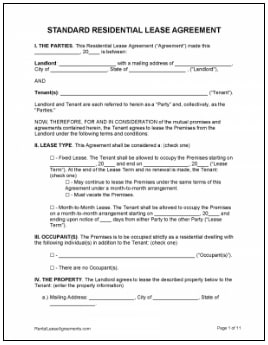
Commercial property lease agreement
A commercial lease agreement is usually more complex than a residential one, as they are often longer, more restrictive, and require a greater commitment from the tenant.A commercial lease usually sets out the type of business activity that will be undertaken on the property.
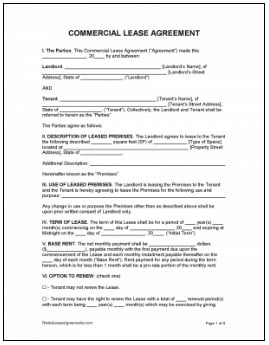
Sublease agreement
A sublease is a contract that a tenant signs with another person to rent out the property they’ve rented. Subleasing requires the landlord’s consent, and the term of a sublease cannot be longer than the original lease.

Month-to-month lease agreement
A month-to-month lease is an agreement that can be altered or ended by either party with an advance notice period of 30 days. This makes it ideal for people looking for short, flexible rental opportunities.
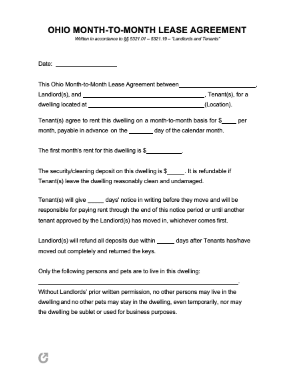
Vacation rental agreement
You can use a vacation rental agreement to rent a furnished property for as little as a few days up to six months. If you’re renting out your property on an online platform such as Airbnb, you may be required to create a vacation rental contract. Although similar to a standard residential agreement, it may also contain other information, such as check-in and check-out procedures or the cancellation policy.
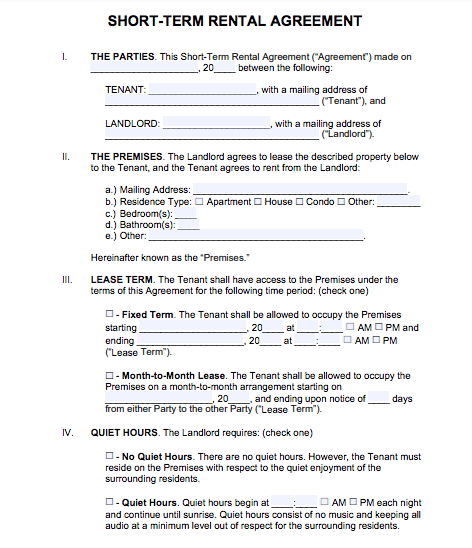
monday.com’s free lease agreement template
The team at monday.com has created a free, fully customizable lease template that you can use for either a residential or commercial lease agreement.
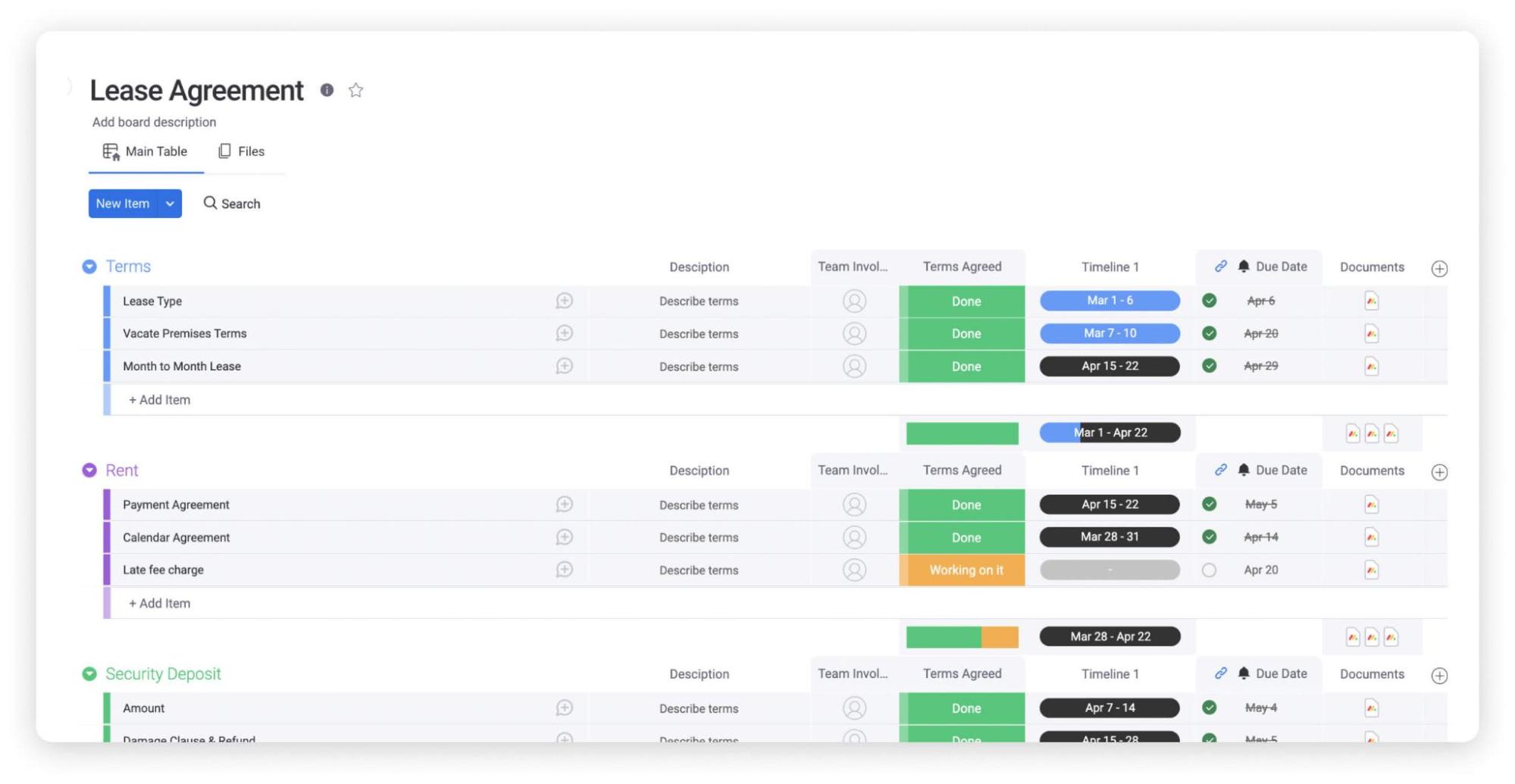
While there are plenty of fine lease agreement templates out there, if you’re a real estate agent or landlord with a number of properties, you might want to consider a more powerful solution, such as a Work OS.
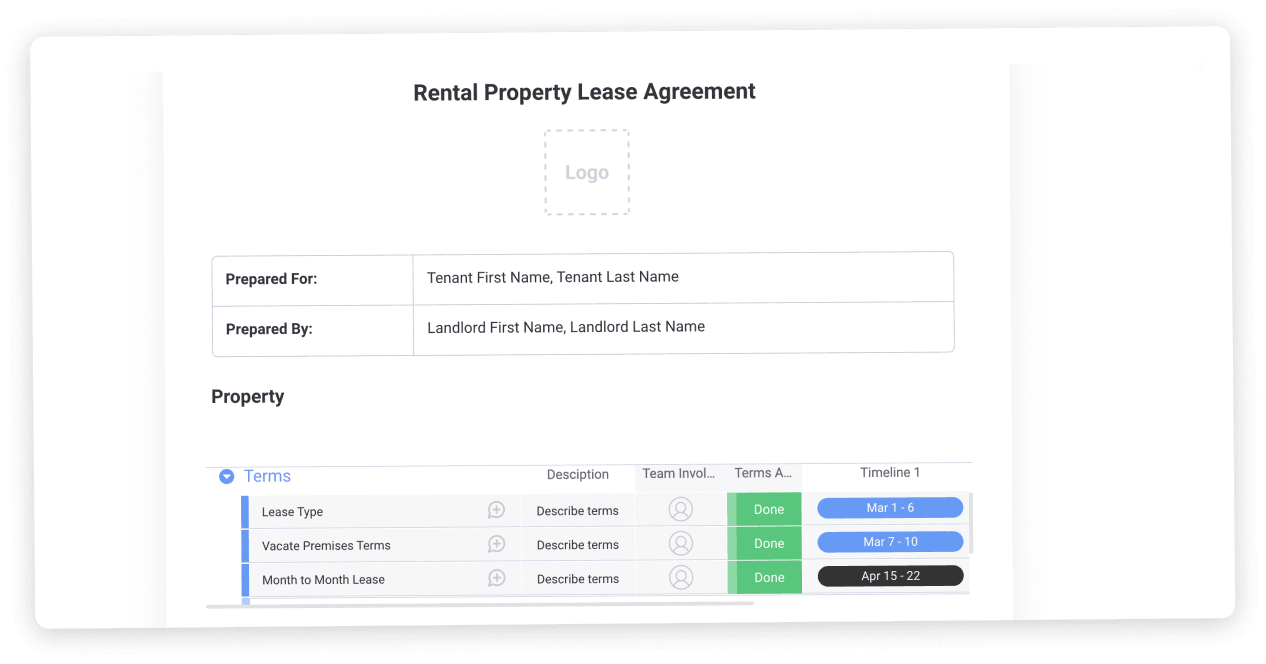
A Work OS — like monday.com — is a virtual workspace that allows you to build custom apps and workflows using drag-and-drop building blocks. We even have a property management template specially designed for real estate agents.
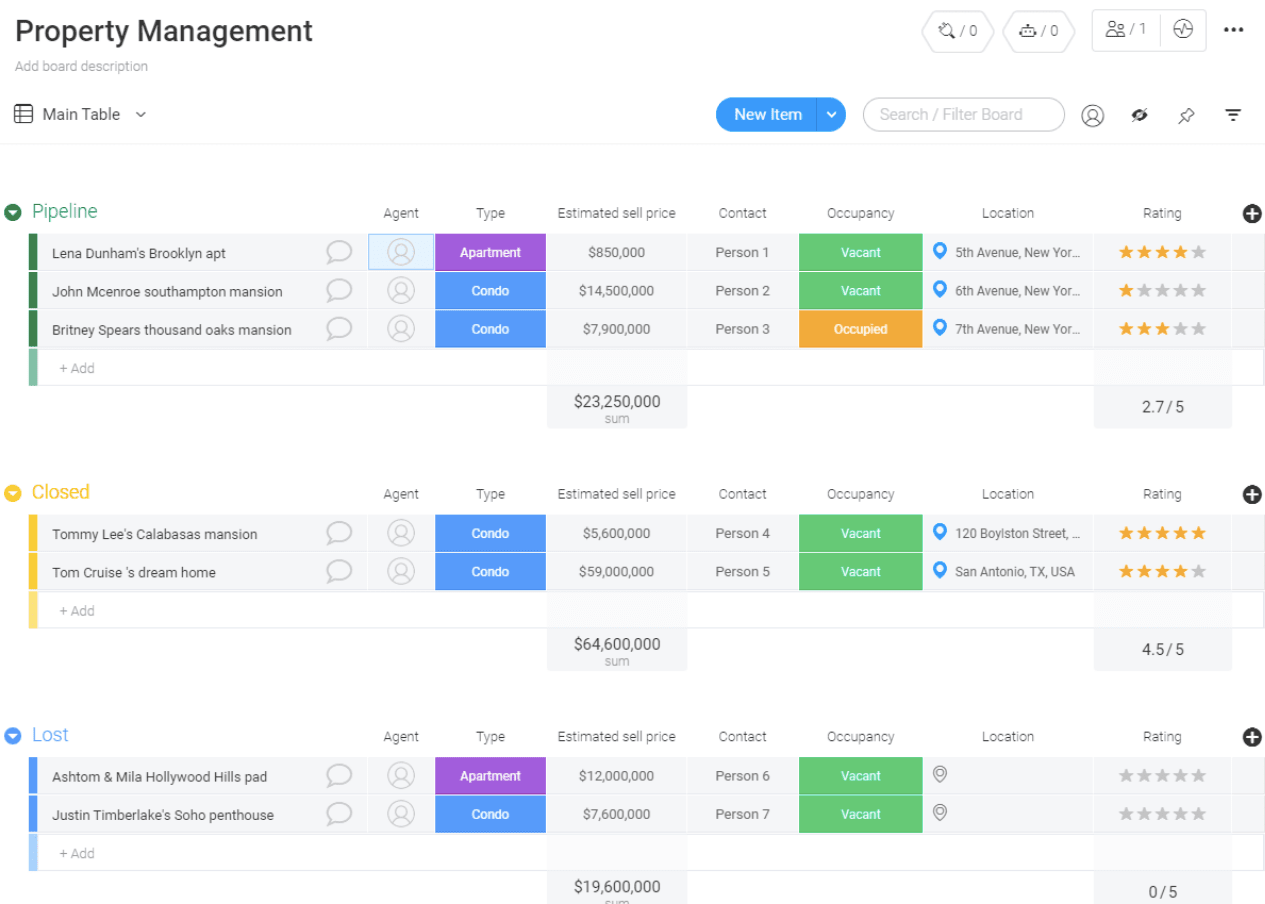
monday.com allows for plenty of flexibility for property management organization — even if you’re a tenant or a landlord with just one property. For example, you can create and manage budgets and using our Budget Tracking template.
Plus, our Dashboard and Board views enable you to visualize your data however you want. Whether you’re a landlord who wants to forecast their income or a tenant who wants to cut back on their expenses, monday.com’s features will help you make sense of the numbers.
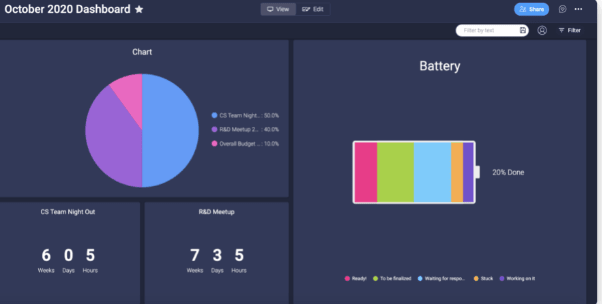
3 tips for creating a lease agreement
Ready to start drafting your lease agreement? Use these three tips to draw up a contract.
1. Check local laws
Although templates can do a lot of the hard work for you, it’s important to get your lease checked by a lawyer to ensure compliance with local and national laws. In the US, the laws governing the agreement vary by state and sometimes even by city, so don’t skip this essential step. You can easily share the agreement template with your lawyer on monday.com.
2. Use clear language
Make sure your lease agreement is written in clear, concise language and avoid legal jargon or ambiguities. A poorly-written contract can cause misunderstandings and may not stand up in court. This is why it can be helpful to use a done-for-you template and use appropriate language and requirements for your next lease agreements.
3. Go into detail
To minimize the risk of misunderstandings:
- Provide a comprehensive set of rules and regulations, including your pet policy and any restrictions, such as no smoking.
- Include a right of entry clause that sets out the notice period the landlord has to give the tenant before entering the property.
- Define what you classify as damage and what you’re prepared to fix, as well as what happens if the tenant breaches the terms of the contract.
Sharing the template with another party — whether a landlord, tenant, or management company — is easy with monday.com. You can add them to the template as a guest or make the template a more collaborative workspace by giving everyone editing permissions.
FAQs about free lease agreement templates
How do you write a simple lease agreement?
Property managers should follow these steps to create a simple lease agreement:
- Gather the occupants’ information such as full names, occupation, etc.
- Write out the property details.
- Specify what the property will be used for and any activity restrictions.
- List utilities and services and specify who will pay for them.
- Set the terms: type of lease, lease period, early termination, and eviction clauses.
- Decide on policies such as pets, parking, and storage.
- Set the monthly rent amount and due date.
- Establish the payment method.
- Review and sign.
Does Microsoft Word have a lease agreement template?
Yes, Microsoft Word has a free lease agreement template that you can customize to create your own contract and minimize any potential problems between tenant and landlord.
How can I make a rent agreement online for free?
You can easily create a rental agreement using monday.com’s free lease agreement template. If you have more than one rental agreement to manage, we recommend using monday.com to develop workflows and processes that ensure you fulfill the terms of all your contracts.
Can a lease agreement be handwritten?
It is possible to handwrite your lease if you want to — as long as it contains all the necessary details, it’s legal. However, there are numerous benefits to digitizing your contracts, including:
- It’s easy to make changes.
- If the original gets lost, you have a backup copy.
- It’s easy to share the document with different parties, such as tenants and lawyers.
- You can collaborate on the creation of the contract and make changes in real-time.
